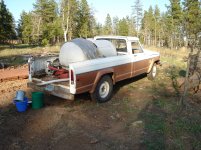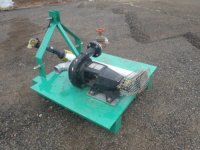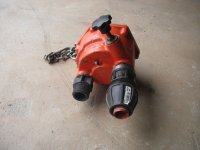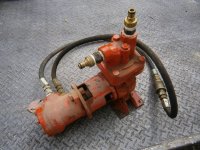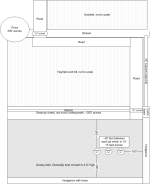aczlan
Good Morning
- Joined
- Mar 7, 2008
- Messages
- 18,078
- Tractor
- Kubota L3830GST, B7500HST, BX2660. Formerly: Case 480F LL, David Brown 880UE
The Help with Brush Fire Water Rig thread has me thinking of our situation, we frequently have fairly large bonfires "out back" (in the middle of a grassy field) and I am looking to make a "water rig" for next year in case one gets out of control and needs containment.
Raw materials on hand:
My aim is to be able to wet down anything that comes loose and blows off or if the fire starts to spread in the grass.
Once one of our bonfires starts, its not worth trying to knock it down, would take a couple thousand gallons of water and someone who knows what they are doing, so I am just trying to keep it contained in a SHTF scenario.
Anyone care to weigh in?
Thanks
Aaron Z
Raw materials on hand:
- 2" trash pump
- 25' of 2" layflat line
- ~8 feet of suction line
- 35 gallon drum mounted in a cradle on a "garden cart" (has a 3/4" pipe out the bottom of the drum)
- 3500# trailer axle on a trailer that will be scrapped soon (popup frame that someone tried to make into a flatbed)
- Toro Workman 2100 (rated to carry ~1200# in the 5'x4' bed or tow the same amount)
- Couple of tractors (see the list of the left), all of which could tow 2500# without much fuss
- 1980s vintage Yamaha electric golf cart
- Stream with a small pond ~500' from the fire spot (~2' deep and 10'x8' for most of the summer)
- Use the axle, the pump and a 300 gallon tote (would have to buy) to make a water trailer with a mounted pump
- Use 2-3 of 55 gallon drums (can get for free) to make a skid that will fit into the back of the Toro and connect the drums in series to the pump
- Put 12v pump onto the existing 35 gallon drum
- Option 1:
Upsides: Can unload a lot of water in a hurry, just hitch and go
Downsides: Cant tow the trailer with the Toro or a golf cart when full (have to pull behind one of the tractors), filling partway will cause much sloshing. - Option 2:
Upsides: Can unload a lot of water in a hurry, very mobile
Downsides: Will be a pain to load and unload, will restrict what can be done with the Toro when it is in the bed, not sure I want to leave that much weight on it frequently, much less water than Option - Option 3:
Upsides: Can move with anything, small
Downsides: Not much water in a emergency situation, will be slow to load and unload (compared to the 2" trash pump)
My aim is to be able to wet down anything that comes loose and blows off or if the fire starts to spread in the grass.
Once one of our bonfires starts, its not worth trying to knock it down, would take a couple thousand gallons of water and someone who knows what they are doing, so I am just trying to keep it contained in a SHTF scenario.
Anyone care to weigh in?
Thanks
Aaron Z
